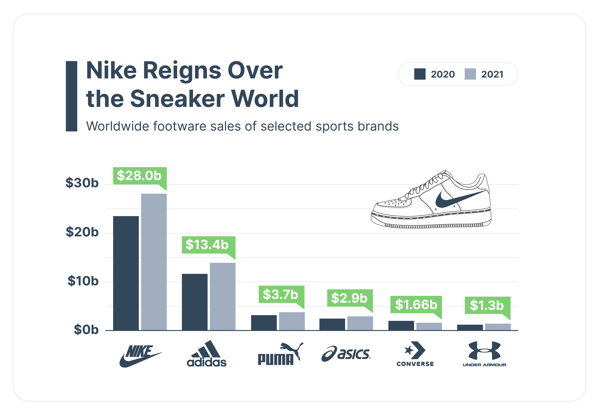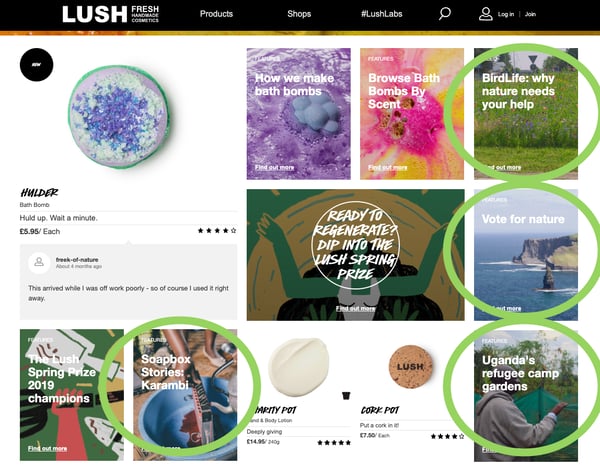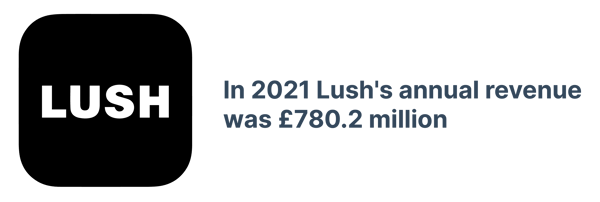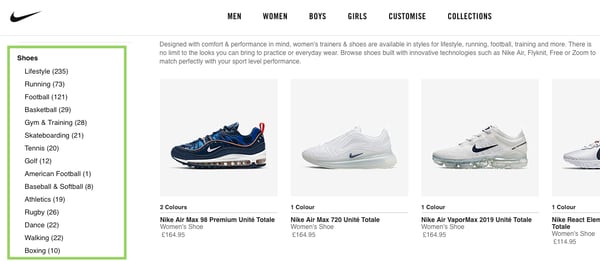Market Targeting: Why it Pays to Differentiate
When creating your marketing strategy, it’s important to consider which types of market targeting you’re going to use. Segmentation and targeting is a key tactic for growing and out-performing your market competitors.
However, when we talk about market targeting, this is different than segmentation types, such as demographic, geographic, psychographic or behavioural segmentation. Market targeting strategies is the next step on from segmentation, and should be part of your overall marketing strategy.
So what are market targeting strategies?
Essentially, your targeting strategy involves evaluating each segment’s attractiveness and, from there, choosing which segment to enter and how to target it. And a brand’s choice tends to be based on which segment they think will bring the business the most value. Establishing your potential customer base and choosing how broadly or narrowly you wish to market to these prospective consumers is key to your brand’s success and longevity.
There are 4 primary targeting strategies used by businesses, and that’s what we’re going to delve into now.
To give a you a visual reference, the 4 targeting strategies look something like this…

1. Undifferentiated Marketing
Often referred to as mass marketing, the undifferentiated strategy basically ignores the differences between market segments and treats the entire market as a single target. Fundamentally, there is essentially no targeting at all. Everyone is a potential customer.
Let’s imagine the entire market as one big cake. The undifferentiated market targeting strategy doesn’t take a single slice or a half or even three-quarters of the treat. It takes the whole thing.
The point of mass marketing is to reach as many people as possible, in the hope that they get on board with your brand. One advantage of this approach is that it’s cost-effective. It’s cheaper for brands to manufacture goods and produce content that is targeted to, well, everyone.
It all makes sense, hopefully, but everything is clearer with an example. So here we go...
Mass marketing usually occurs when a brand has a product or service that has a high market appeal. This is most common when it comes to things that people will always need or want. Like toothpaste, toilet roll, washing up liquid, furniture, and so on.
Take IKEA, the Swedish furniture and homeware retailer - they mainly sell general homeware, kitchen appliances, and ready-to-assemble furniture. And I think we can all agree, it’s just generally quite a fun place to walk about in, too. But that’s not the main point. The main point is that IKEA wins at undifferentiated marketing because of its huge, mass appeal.

IKEA are as popular offline as they are online. To put it into perspective; In 2022 financial year, IKEA saw 822 million store visits while its online channels hosted 4.3 billion visitors. Wow. It’s impressive, but overall, it’s not too surprising as the home-goods giant has the right price and product for almost every consumer. They don’t compromise. IKEA have high-end tags and a wide range of styles. Even their simplest, most basic product is still both innovative and affordable.
IKEA not only has mass appeal in their products and price but in their personality, too. Because who doesn’t love a candid eco-enthusiast?

It turns out, IKEA has been eco-minded for some time now. They have even committed to operating 416 offsite wind turbines and have installed around 750,000 solar panels on IKEA buildings, globally.
But it’s not just about the price or style range or environmental-mindedness for IKEA. It’s also about the experience.
So for many people, the ‘IKEA day out’ is a real thing. And it’s easy to see why; you can get a bite to eat, pick up those homeware essentials while also exploring the half-made homes. Essentially, it's an adult playground. And it’s the existence of this shared experience and common thought that heavily contributes to IKEA’s mass-market appeal and the almost cult-like status of the IKEA day out.
This type of undifferentiated market targeting can be quite appealing to some brands as we've just seen, because it can seem a lot less risky than more segmented, precise forms of targeting. It undoubtedly works for larger, established brands like IKEA, but some say this targeting strategy is on its way out.
Why? Because brands that mass-market run the risk of increased competition and over-exposure, and it can be expensive. just like us, brands are feeling the cost of living squeeze. Wasting money targeting large groups of consumers is inefficient and can be seen as wasteful.
But, most of all, the move away from undifferentiated targeting is because consumers today want to be treated as unique individuals, with highly personalised products, content, and messages.
And that’s where the next on our list comes in.
2. Differentiated Marketing
Differentiated market targeting offers us a little more depth and clarity. It’s otherwise known as ‘segmented’ marketing and entails isolating a number of (generally two or more) primary target segments that have the most potential value for the company.
Once a brand has defined those few targets, the plan is then to develop separate marketing strategies for each.
This type of market targeting is one of the most common. It makes sense for brands to identify several market segments and then design separate, concentrated strategies for each. In this way, companies don’t just constantly churn out products that are all the same, with no unique selling point, in the hope consumers will just buy whatever is offered to them. Segmented market targeting understands that consumers fit into different groups that require and respond well to personalisation.
Take the iconic sportswear brand Nike. In terms of footwear, they are most well known for their trainers. But they wouldn’t get very far simply advertising one, single brand ‘trainers’. Like most other apparel brands, Nike offers different products for different segments.
They love selling trainers, and they love selling trainers to you. But who are you? Are you a runner, weightlifter, cyclist, gym-goer, golfer, outdoorsy-type, or someone who simply loves sports footwear fashion? Well if you answered yes, or even ‘no’, to any of those options, Nike will have the footwear you’re after.
Source: Nike
In 2021, Nike boasted annual footwear sales of $47.7 billion, it has previously been voted one of the best sneaker brands in the world, was the best retro running shoe of 2019 and, according to FashionBeans, Nike is known as the "Undisputed Master of Hype" (and the stats reflect this):

Even with the rise of big brand competitors such as Adidas teaming up with global stars and influencers, like Beyonce, Nike still remains one of the most dominant players in sneaker fashion.
Nike are innovators, collaborators, money-makers, and game-changers. Nike are able to target a range of segments simply because of their widespread resources and understanding of their target markets. Their products are diverse and wide-reaching. And, like any successful brand, all of Nike’s products are specifically manufactured and promoted to reach distinct market segments.
Unlike undifferentiated, segmented targeting gets the benefits of avoiding over-exposure to consumers and dodging walls of competitors. I mean, not completely dodging them but sort of evading some of them, like an intermediate matador.
Brands that use differentiated targeting are likely to see success that is more consistent than undifferentiated, as their offerings will be more personalised and focused. Consumers will appreciate this. And will thus have more loyalty to the brand that offers them distinctively featured products, opposed to the brand that offers the same things as every other company, but at a cheaper price (for now, anyway).
3. Concentrated Marketing
Concentrated marketing is often called ‘niche marketing’. If we’re keeping with the cake metaphor, concentrated marketing doesn’t take the whole cake, half or even quarter-slices. It takes just one, small, specific slice which has some kind of desired attribute on top. Like a piece of chocolate or an icing rosette.
Essentially, niche marketing puts all of its focus on one, or a few, narrow, specific consumer groups. Brands channel all of their marketing efforts towards their uniquely defined segment of the population, with the aim of owning this particular segment over their competitors. This way, the brand aims to reach its growth potential and create thriving brand loyalty and long-lasting relationships with its ideal consumer group.
Take Lush, for example. This eco-friendly cosmetics retailer sets itself apart from the competition by embedding its strong, undying ethical message in every available physical and digital avenue. This is clear when looking at their website’s homepage alone:


Source: Lush
A good portion of their digital footprint is dedicated to fighting animal testing; fighting over-use of plastic packaging and raising awareness of climate change. And this is exactly how they define and promote their niche.
Yes, that’s right. Lush is a little bit different when it comes to traditional marketing, in the sense that, well, they don’t really do it. Pretty much all of their marketing relies on word-of-mouth and a little social media, where they predominantly share original and user-generated content (UGC). And it really works.

But whilst Lush itself advocates things like environmental awareness, there’s no guarantee that all of its consumers reflect these thoughts. Lush are still an online and high-street brand. Their products are available to anyone who wishes to purchase them, therefore they can’t be sure that all of their customers are vegan, against animal testing, or that they even agree that climate change is a thing. They are simply making an educated guess.
Being niche has more benefits than just personalisation for consumers, though. Whilst narrowing segments of the population concentrated marketing also reduces competition. That’s what we like to hear. It also leaves room for innovation as well as optimising brand loyalty and cutting company costs.
So, whilst concentrated marketing enables brands to streamline their marketing efforts and create unique, personalisation for their narrow target audience, it doesn’t allow brands to totally know and govern those who interact with them or their products.
But do you know what? Micro-marketing does.
4. Micromarketing
Micromarketing goes just that one step further than concentrated marketing. In fact, micromarketing targets a specific group (localised microsegments), or individuals, within a niche market. This strategy is highly targeted as all marketing efforts are focused on the distinct characteristics of these small groups or individuals.
A great example of a brand that successfully uses micromarketing is Groupon. Groupon is a digital marketplace where users are able to access coupons online for, well, almost anything. From holidays and retail products to sports massages and date nights.
Groupon allows users to get location-based deals from almost any digital device. It was launched in 2008 and since then, Groupon has grown to be the most popular website for discounts and promotions in the United States. Yes, the global ecommerce marketplace is a pro when it comes to targeting users incredibly specifically.
Let’s face it, we all love a treat. And Groupon is really good at assuaging some of our guilt and justifying our purchases because of those juicy discounts. Not only that, Groupon’s hyper-tailored targeting techniques mean that it tracks user activity and tailors content and deals accordingly.
Groupon prioritises the customer. And whilst some disadvantages of micromarketing (like potential difficulty to expand or higher cost per acquisition) are apparent for many brands, the versatility of Groupon’s offerings and their highly personalised and customisable discounts lead them to be almost exempt from this digital sterilisation.
This all sounds too good to be true, right? It does. But it is true. In 2021, Groupon had over 24 million active users. This is super impressive considering that one of their competitors is the ecommerce giant, Amazon.
So for these guys, it really does pay to differentiate.
Of course, there are many benefits and drawbacks to each targeting strategy. However, the most important thing is deciding which one is the most suitable for your brand. So, before you jump into any old target market, remember these few things:
- Identify your values and goals
- Analyse your data
- Look into current and prospective competitors
...And you’ll be ready to go!
Share this
You May Also Like
These Related Stories
.png)
Hit The Bullseye with 4 Top Market Targeting Strategies

Introducing Niche & Micro Market Targeting: A Marketer's Guide





